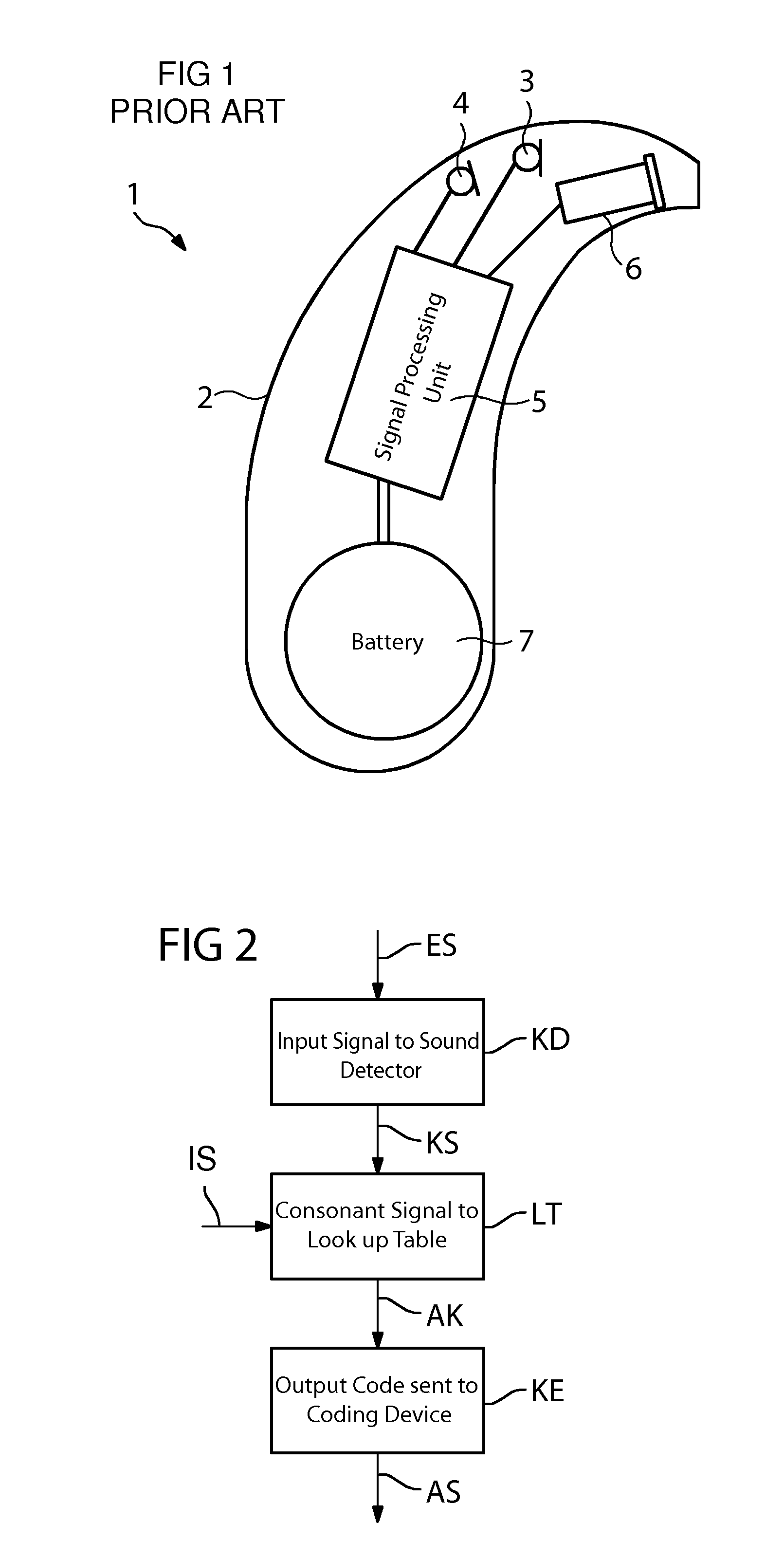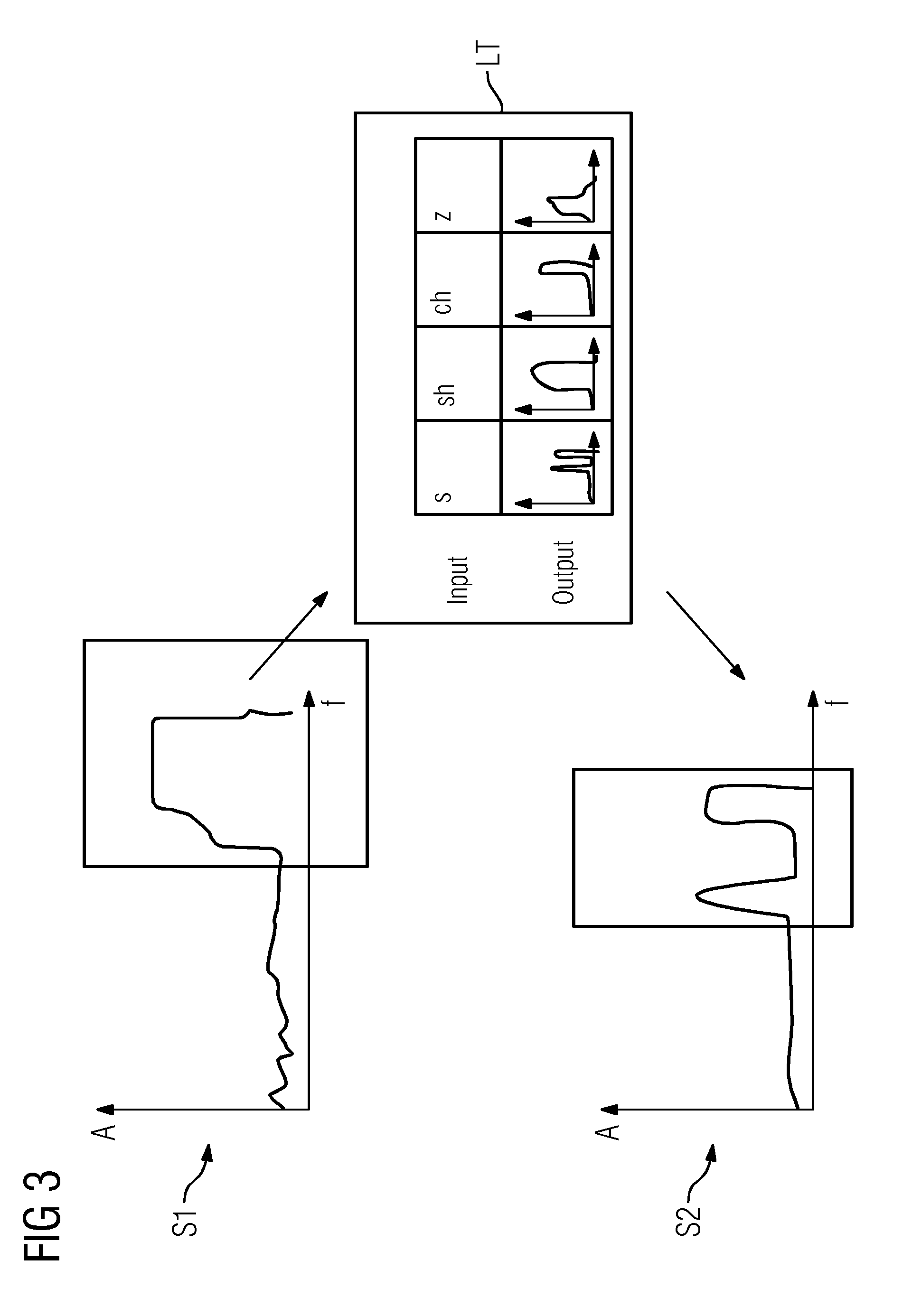Method for improving the comprehensibility of speech with a hearing aid, together with a hearing aid
- Summary
- Abstract
- Description
- Claims
- Application Information
AI Technical Summary
Benefits of technology
Problems solved by technology
Method used
Image
Examples
Embodiment Construction
[0027]Referring now to the figures of the drawing in detail and first, particularly, to FIG. 1 thereof, there is shown a greatly simplified block diagram of the structure of a hearing aid in accordance with the prior art. In principle, hearing aids have as their essential components one or more input transducers, an amplifier and an output transducer. In general, the input transducer is a sound receiver, e.g. a microphone, or an electromagnetic receiver, e.g. an induction coil. The output transducer is mostly realized as an electro-acoustic transducer, e.g. a miniature loudspeaker or earpiece, as appropriate, or as an electro-mechanical transducer, e.g. a bone conduction earpiece. The amplifier is commonly integrated into a signal processing unit. This structural principle is illustrated in FIG. 1 by an example of a behind-the-ear hearing aid 1. Built into a hearing aid housing 2 which is to be worn behind the ear are two microphones 3 and 4 for the purpose of receiving the sound fr...
PUM
 Login to View More
Login to View More Abstract
Description
Claims
Application Information
 Login to View More
Login to View More - R&D
- Intellectual Property
- Life Sciences
- Materials
- Tech Scout
- Unparalleled Data Quality
- Higher Quality Content
- 60% Fewer Hallucinations
Browse by: Latest US Patents, China's latest patents, Technical Efficacy Thesaurus, Application Domain, Technology Topic, Popular Technical Reports.
© 2025 PatSnap. All rights reserved.Legal|Privacy policy|Modern Slavery Act Transparency Statement|Sitemap|About US| Contact US: help@patsnap.com



